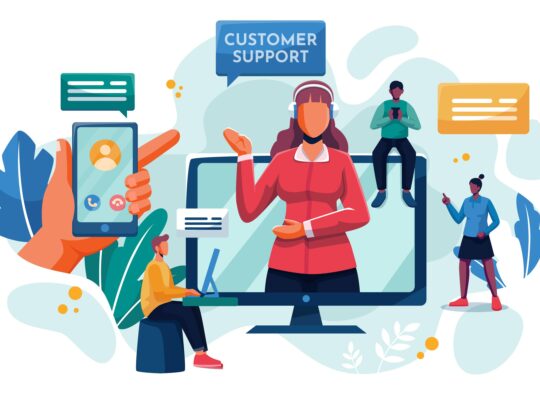| Customer Advocacy | ||
| Instructor: Brad Cleveland | ||
| Released: 1/10/2023 | Course Details 1h6m Intermediate | |
| Skills Covered Customer Advocacy | Course Link | |
| Professional Certifications and Continuing Education Units (CEUs) National Association of State Boards of Accountancy (NASABA) – CPE: 2.6 | ||
| Learn why customer advocacy is important, how to develop employees who are customer advocates, and how to use the voice of the customer (VOC) to inform strategies across functions including IT, HR, R&D, production, and legal. Customer strategist Brad Cleveland reveals a proven model for creating an effective customer advocacy initiative, which includes capturing customer insights, interpreting and analyzing intelligence, communicating findings, prioritizing action items, measuring results, and turning customers into promoters of your products and services. Learning objectives – Identify the benefits of customer advocacy. – Identify traits of successful customer advocacy. – Discover ways to understand your customer. – Evaluate results from a customer advocacy program. – Determine how to turn customers into brand advocates. – Assess how to develop a culture of customer advocacy. Source: LinkedIN Learning | ||
Principles of Customer Advocacy
What is Customer Advocacy?
Internal Perspective
Focuses on the organization and how it creates great experiences for customers.
External Perspective
Focuses on customers who advocate and spread the word about the products, services, and brand.
Customer Advocacy
The actions we take to focus the organization on doing what is best for customers, which in turn rewards us with loyal customers who advocate for our products and brand.
Customer Experience
All of the experience that customers have with your organization. Including products, services, processes, policies, the expectations you set, and other factors. Often called the end-to-end customer journey.
Voice of the Customer (VOC)
- Captures input
- Seeks to understand
- Reveals vital information
How Customer Advocacy is Different from Customer Experience and VOC
- Takes action
- Is informed by the voice of the customer
- Extends across the entire customer journey
Why is Customer Advocacy Important?
Three Developments that create the need for Customer Advocacy
- Rapidly evolving customer expectations
- Interrelated nature of functions and departments
- Importance of using time and resource wisely
Without an effective approach to customer advocacy, customers and problems making the most noise will get the attention on a case by case basis but that doesn’t mean there aren’t other issues that are just as important.
The iceberg effect means that you only hear from 1% to 5% of your customers experiencing the same problems all customers are experiencing. This means those 10 complaints could represent 40 to 200 silent customers depending on your customer base.
Benefits of Customer Advocacy
- Repeat business
- Positive word of mouth
- Lower marketing costs
- Reduced service costs
Trait of successful Customer Advocacy Initiatives
How Organizations Implement Customer Advocacy
- Designate individuals as customer advocates
- Establish a customer advocacy team or tier within customer service
- Establish a central team that oversees customer advocacy across the organization
- Build the principles of customer advocacy into strategy and culture
Customer Advocacy
- Is action oriented
- Has support of top management
- Helps prioritize and implement overall improvements
- Measures success through customers’ perspectives
- Recognizes value of brand advocates
Empowering employees to be Customer Advocates
Five Components That Are Essential to Develop Employees
- Customer-focused vision
- A deep understanding of customer advocacy
- What does it mean to put yourself in customers’ shoes?
- How do you find the best value for them?
- How do you escalate issues and get them resolved?
- How much decision-making authority do you have?
- How and where do you capture information that enables the organization to make overall improvements?
- Empowerment
- Right goals and objectives
- Supporting tool and processes
Harnessing service and operations
Customer Service Delivers on Three Levels:
- Efficiency
- Contribution to Customer Satisfaction and Loyalty
- Strategic – cross-functional – share with other areas of the organization to improve
Identifying cross-functional benefits
Operations
- Fixes quality problems, in turn reducing costs
Research and Development
- Identifies the customers’ wants
- Identifies the organization’s strengths and weaknesses
Legal
- Identifies potential issues
- Defects
- Reactions
- Security Holes
- Inaccuracies
Self-Service
- Lowers costs of providing service
- Boosts customer satisfaction
- Improves the organization’s capacity to focus on other issues
- Facilitates proactive service
Human Resources
- Helps reduce employee turnover
Nurturing Customers to Become Brand Advocates
The power of Brand Advocates
Benefits of Brand Advocates
- Customer recommendations are more believable than paid advertisements (Nielsen)
- Word-of-mouth drives 20-50% of all decisions (McKinsey & Company)
- Advocate customers spend twice as much (Bain & Company)
- Up to 70% of new customers are through customer referrals (The Cheesecake Factory, USAA, and Red Bull)
Brand Advocates
- Help you develop and enhance your products and services
- Make you aware of what your competitors are doing
- Inspire innovate ideas
Passive promoters
Typical Characteristics of Passive Promoters
- They are willing to share
- They write testimonials and reviews
- They answer questions on reviews or forums
More than two-thirds of customers will respond to a personal request for a review.
(Local Consumer Review Survey, BrightLocal)
Active promoters
Four Primary Traits
- They are eager sharers.
- They converse with you and expect recognition in return.
- They convince others to try your products or brand.
- They will try new, other products based on your reputation.
Pyramid of Advocate Needs
Keeping the momentum
Business lose advocates daily mainly through neglect than anything that is done by the company.
Five Principles for Maintaining Trust
- Treat the relationship with respect. Express appreciation.
- Be accessible.
- Actively listen.
- Be supportive.
- Be present, join the conversation.
Conclusion
Developing a culture of Customer Advocacy
Customer advocacy needs to be earned and it’s ongoing.
Five Key Principles
- Employees and customers respond to a clear, compelling mission.
- It’s what you do, more than what you say, that really matters.
- Communication cultivates trust.
- You should expect the best.
- Good resource management is essential.
Continuing to cultivate Customer Advocacy
- Identify who should be involved.
- Revisit specific topics of this course.
| Remember! To experience the full benefit of this guide, I highly recommend you watch the full training session. |






